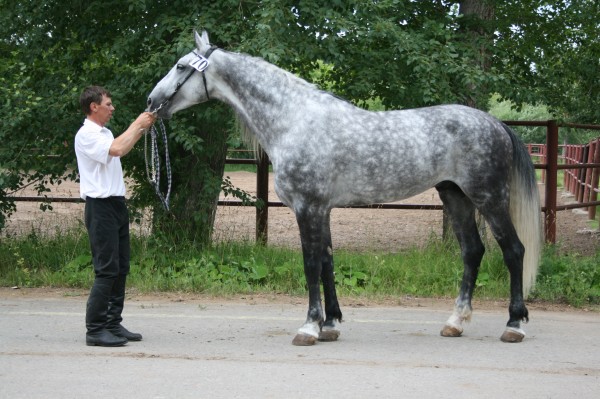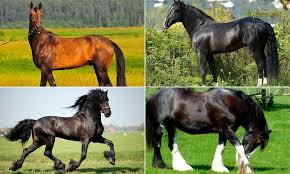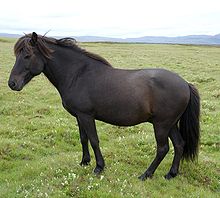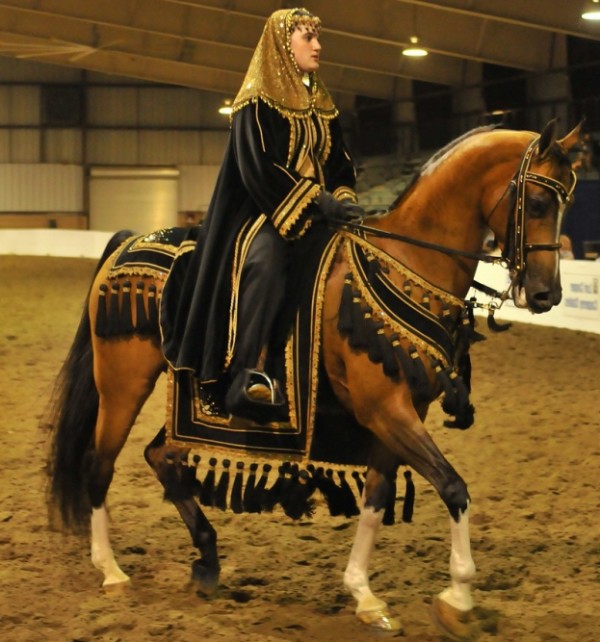American painthorse
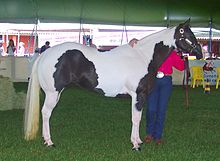 History
History
American painthorse combines the performance of a cowboy horse with a fancy freckle suit. This breed was bred on the basis of quarterbacks and thoroughbred riding horses. Painthorse history is closely linked to quarterback history. Both of these breeds are descendants of horses brought into the New World by Fernando Cortes.
Formed in 1940, the American Quarter Horse Association (AQHA) registered cowboy-type horses, culling freckles and heavily distinguished ones. In turn, fans of freckles have set up several breeding organizations. In 1962, these organizations merged into the American Paint Horse Association (APHA).
Color
Each Painthorse horse has a certain combination of white and a different color. The most common are horses with white spots in combination with blacks, nests, browns and reds. Less common are horses with small specks. Continue reading
Perseron
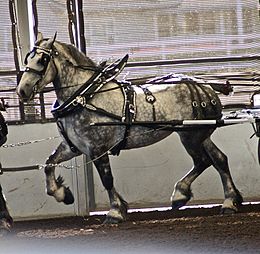 Height at withers up to 175 cm; the typical suit is gray, but there is also a crow. Designed for work requiring special strength and endurance, they are also very widely used for horseback riding because of the particularly gentle running.
Height at withers up to 175 cm; the typical suit is gray, but there is also a crow. Designed for work requiring special strength and endurance, they are also very widely used for horseback riding because of the particularly gentle running.
Breed history
Bred in France at the beginning of the XIX century by crossing eastern, mainly Arab stallions with a local harness of heavy western type. Perserons were imported into Russia in the 19th century.
The Persherons derive their name from the abundant pastures of the Perche breeding area south of the mouth of the River Seine; they represent a purebred Nori horse containing a highly variable admixture of oriental blood; to resort to such crossing has caused the need for strong and fast horses, necessary for the postal chase and omnibus. Continue reading
Mustang
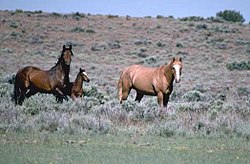 The Mustang is a semi-wild horse of the American prairies.
The Mustang is a semi-wild horse of the American prairies.
The Mustangs were the riding horses of the Indians. Different tribes of Indians chose animals of different suits. Cheyenne Indians considered, for example, mustangs with patches on the head of sacred animals with magical properties capable of securing victory in battle. They were called mascots.
The ancestors of the Mustangs were wild horses of Spanish conquerors in America. They were brought here in the sixteenth century. Some of them escaped freedom and adapted to life on the prairies. Continue reading
Oldenburg horse breed
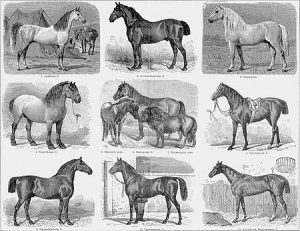 The Oldenburg breed is one of the oldest warm-blooded horse breeds that arose in the 17th century in a small German county (Oldenburg province, East Frisia). Named in honor of its founder, Count Anton Gunter von Oldenburg (1603-1667), who was passionately fond of horse breeding. His horse breeder subsequently became the best in Germany. And no wonder. Many factors contributed to this: a mild marine climate, spacious pastures rich in greenery, and also close proximity to Holland, which has long been famous for its ancient traditions of horse breeding. The Oldenburg horse at the beginning of its evolutionary development looked like a harnessed one, with a high-ranking gait (for the convenience of a collar), with movable wrists and shoulders. Then over the years, the appearance of the horse changed. German horse breeders always quickly adapted to the ever-changing demands on horses. However, it was not so much a quick change of orientation that made the Oldenburg horses popular, but rather the high quality standards for horses. For example, throughout the 17th century, the Oldenburg horse acted as a baroque-style horse. Continue reading
The Oldenburg breed is one of the oldest warm-blooded horse breeds that arose in the 17th century in a small German county (Oldenburg province, East Frisia). Named in honor of its founder, Count Anton Gunter von Oldenburg (1603-1667), who was passionately fond of horse breeding. His horse breeder subsequently became the best in Germany. And no wonder. Many factors contributed to this: a mild marine climate, spacious pastures rich in greenery, and also close proximity to Holland, which has long been famous for its ancient traditions of horse breeding. The Oldenburg horse at the beginning of its evolutionary development looked like a harnessed one, with a high-ranking gait (for the convenience of a collar), with movable wrists and shoulders. Then over the years, the appearance of the horse changed. German horse breeders always quickly adapted to the ever-changing demands on horses. However, it was not so much a quick change of orientation that made the Oldenburg horses popular, but rather the high quality standards for horses. For example, throughout the 17th century, the Oldenburg horse acted as a baroque-style horse. Continue reading
Russian scientists found out how modern horse breeds appeared
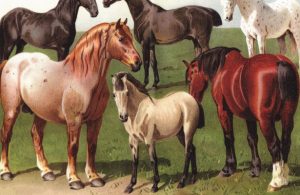 Using cutting-edge DNA research methods, an international research team of archaeologists, geneticists and evolutionary biologists from 85 scientific institutions around the world has collected genomic data that spans the last 42,000 years of horse development and has tracked the contribution of various genetic lines to the formation of modern breeds. horses. The results of the work can be found on the pages of the journal Cell, research supported by a grant from the Russian Science Foundation.
Using cutting-edge DNA research methods, an international research team of archaeologists, geneticists and evolutionary biologists from 85 scientific institutions around the world has collected genomic data that spans the last 42,000 years of horse development and has tracked the contribution of various genetic lines to the formation of modern breeds. horses. The results of the work can be found on the pages of the journal Cell, research supported by a grant from the Russian Science Foundation.
People tamed a horse about 5.5 thousand years ago, after dogs, cattle and pigs. From the moment they learned to ride, milk horses and control their reproduction, the history of mankind has radically changed. The ways of traveling and developing new territories, transporting goods and conducting military operations have become different. Depending on the region and various needs, people selected animals according to different principles – this is how different breeds of modern domestic horses appeared. Continue reading
